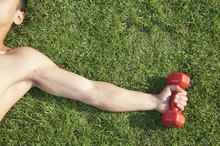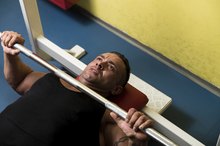Spinalis Thoracis and Exercise
Your spinalis thoracis muscles are part of the erector spinae muscle group that is located adjacent to your spine bilaterally. Specifically, the spinalis thoracis attaches to segments of your thoracic spine, roughly adjacent to your shoulder blades. The erector spinae muscles are responsible for keeping your posture straight and for arching or extending your back. Weak spinalis thoracis muscles may contribute to poor posture and mid-back pain. Consult with a chiropractor about the importance of your spinal muscles and how to exercise them.
If you are experiencing serious medical symptoms, seek emergency treatment immediately.
Spinalis Thoracis
The erector spinae group is a bundle of muscles and tendons that run alongside your spine. This group consists of three segments, one of which is called the spinalis thoracis or dorsi. The spinalis thoracis is a deep band of muscle that attaches to the lower thoracic vertebrae and follows the spine up into the lower part of the neck, or cervical spine, according to the “Atlas of Human Anatomy.” The spinalis thoracis cannot be visualized by the eye because it is buried underneath many layers of muscle that comprise your mid-back, such as:
- the rhomboids
- trapezius
- latissimus dorsi [1](# 'inline-reference::Atlas of Human Anatomy; Frank H
Netter').
Function
Muscles Involved in Hip Flexion
Learn More
Acting unilaterally, contraction of the spinalis thoracis causes lateral flexion of the spine, which happens when you slide your hand along the side of your thigh towards the outside of your knee. Acting bilaterally, contraction of both spinalis thoracis muscles causes erection and hyperextension of the thoracic spine, according to the book “Clinically Oriented Anatomy.” They work in conjunction with the semispinalis thoracis, longissimus thoracis and iliocostalis thoracis muscles 2. All of these muscles are stretched by the opposite movement, such as bending forward to touch your toes.
Potential Problems
A multitude of factors causes thoracic spine dysfunction, but weakness of the spinalis thoracis muscles contributes to a slouching posture, which is termed a thoracic hyperkyphosis.
Exercises
Muscles Used in Hip Extension
Learn More
Exercising your erector spinae muscles involves lateral side-to-side movements and spinal extension. This exercise is sometimes called the “Superman” posture and is very effective for strengthening many muscles related to your spine. Trying to balance on your stomach on top of a large exercise ball provides similar benefits, but is a more advanced exercise. At the gym, virtually any exercise that involves extending your mid-back and trying to bring your shoulder blades closer together strengthens your spinalis thoracis muscles.
- Exercising your erector spinae muscles involves lateral side-to-side movements and spinal extension.
- At the gym, virtually any exercise that involves extending your mid-back and trying to bring your shoulder blades closer together strengthens your spinalis thoracis muscles.
Related Articles
References
- Atlas of Human Anatomy; Frank H. Netter
- Clinically Oriented Anatomy; Keith L. Moore
- Human Physiology: An Integrated Approach; Dee Silverthorn and William Ober
- Exercise Physiology: Energy, Nutrition, and Human Performance; William D. McArdle, et al.
Writer Bio
Sirah Dubois is currently a PhD student in food science after having completed her master's degree in nutrition at the University of Alberta. She has worked in private practice as a dietitian in Edmonton, Canada and her nutrition-related articles have appeared in The Edmonton Journal newspaper.






